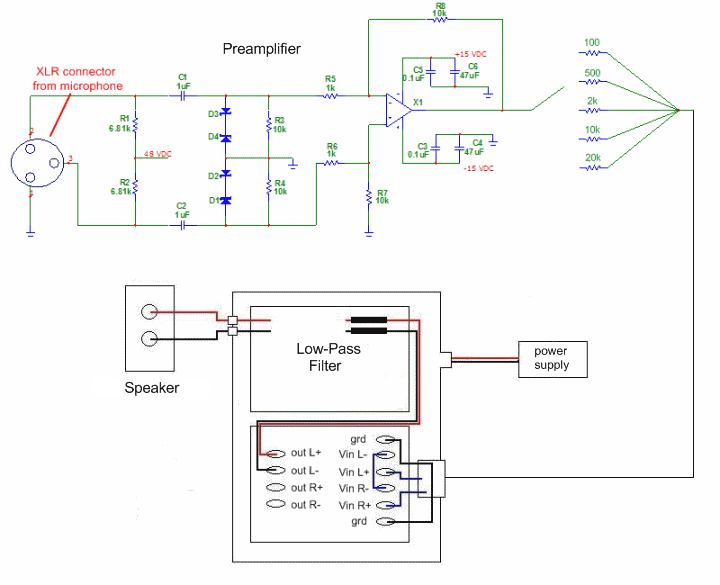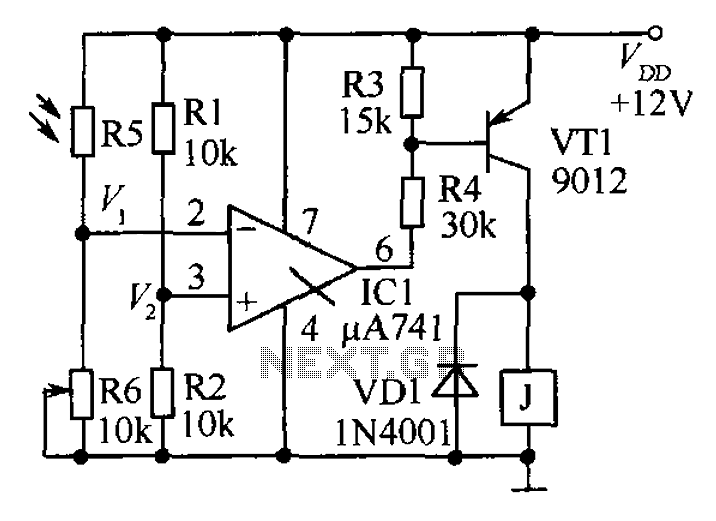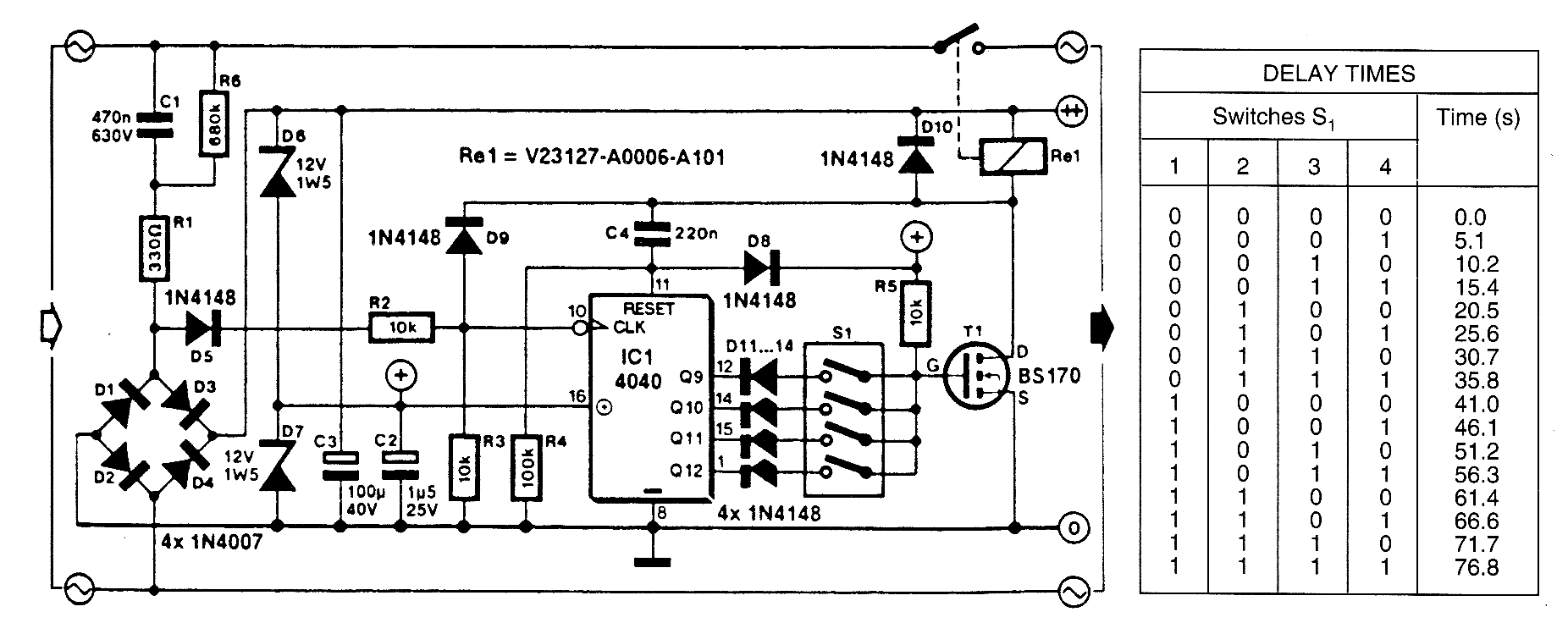
TV transmitter circuit

The TV transmitter described utilizes UK standard 1 FM modulation for sound and PAL modulation for video. The audio signal to be modulated is first amplified using transistor Q1 and its associated components. Transistor Q2 serves dual functions: generating the carrier frequency and performing modulation. The pre-amplified audio signal is applied to the base of transistor Q2 for modulation. A tank circuit, composed of capacitor C5 and inductor L1, is responsible for producing the carrier frequency. The video signal is introduced to the emitter of transistor Q2 through potentiometer R7 for modulation. The resulting modulated composite signal, which combines audio and video, is transmitted via antenna A1.
The TV transmitter circuit operates by employing frequency modulation (FM) techniques for audio signals and phase-alternating line (PAL) standards for video signals. The initial stage involves the pre-amplification of the audio input through transistor Q1, which is configured to enhance the audio signal to a suitable level for further processing. This transistor is typically biased to operate in its active region, ensuring linear amplification.
Transistor Q2 plays a crucial role in the modulation process. It is configured to operate in a common-emitter configuration, which allows it to modulate the audio signal onto the carrier frequency generated by the tank circuit. The tank circuit, consisting of capacitor C5 and inductor L1, is tuned to resonate at the desired carrier frequency. The values of C5 and L1 must be selected carefully to achieve the correct frequency, which is essential for effective transmission.
The video signal, which is typically a composite signal, is fed into the emitter of transistor Q2 through potentiometer R7. The potentiometer allows for adjustment of the video signal level, ensuring that the modulation of the video does not distort the audio signal. This adjustment is critical for maintaining the integrity of the transmitted signal.
Once the audio and video signals are modulated, the composite output is transmitted via antenna A1. The antenna must be designed to operate efficiently at the chosen transmission frequency, ensuring that the signal can be effectively radiated over the desired coverage area.
Overall, this TV transmitter design incorporates essential components and configurations that enable the successful modulation and transmission of audio and video signals, adhering to established broadcasting standards. Proper component selection, biasing, and tuning are key factors in achieving optimal performance in this circuit.The TV transmitter given here uses UK standard 1 FM modulation for sound and PAL for video modulation. The audio signal to be modulated is pre-amplified using the transistor Q1 and associated components. The transistor Q2 has two jobs: production of carrier frequency and modulation. The pre-amplified audio signal is fed to the base of transistor Q 2 for modulation. Capacitor C5 and inductor L1 forms the tank circuit which is responsible for producing the carrier frequency. The video signal is fed to the emitter of transistor Q2 via POT R7 for modulation. The modulated composite signal (audio+video) is transmitted by the antenna A1. 🔗 External reference
The TV transmitter circuit operates by employing frequency modulation (FM) techniques for audio signals and phase-alternating line (PAL) standards for video signals. The initial stage involves the pre-amplification of the audio input through transistor Q1, which is configured to enhance the audio signal to a suitable level for further processing. This transistor is typically biased to operate in its active region, ensuring linear amplification.
Transistor Q2 plays a crucial role in the modulation process. It is configured to operate in a common-emitter configuration, which allows it to modulate the audio signal onto the carrier frequency generated by the tank circuit. The tank circuit, consisting of capacitor C5 and inductor L1, is tuned to resonate at the desired carrier frequency. The values of C5 and L1 must be selected carefully to achieve the correct frequency, which is essential for effective transmission.
The video signal, which is typically a composite signal, is fed into the emitter of transistor Q2 through potentiometer R7. The potentiometer allows for adjustment of the video signal level, ensuring that the modulation of the video does not distort the audio signal. This adjustment is critical for maintaining the integrity of the transmitted signal.
Once the audio and video signals are modulated, the composite output is transmitted via antenna A1. The antenna must be designed to operate efficiently at the chosen transmission frequency, ensuring that the signal can be effectively radiated over the desired coverage area.
Overall, this TV transmitter design incorporates essential components and configurations that enable the successful modulation and transmission of audio and video signals, adhering to established broadcasting standards. Proper component selection, biasing, and tuning are key factors in achieving optimal performance in this circuit.The TV transmitter given here uses UK standard 1 FM modulation for sound and PAL for video modulation. The audio signal to be modulated is pre-amplified using the transistor Q1 and associated components. The transistor Q2 has two jobs: production of carrier frequency and modulation. The pre-amplified audio signal is fed to the base of transistor Q 2 for modulation. Capacitor C5 and inductor L1 forms the tank circuit which is responsible for producing the carrier frequency. The video signal is fed to the emitter of transistor Q2 via POT R7 for modulation. The modulated composite signal (audio+video) is transmitted by the antenna A1. 🔗 External reference





